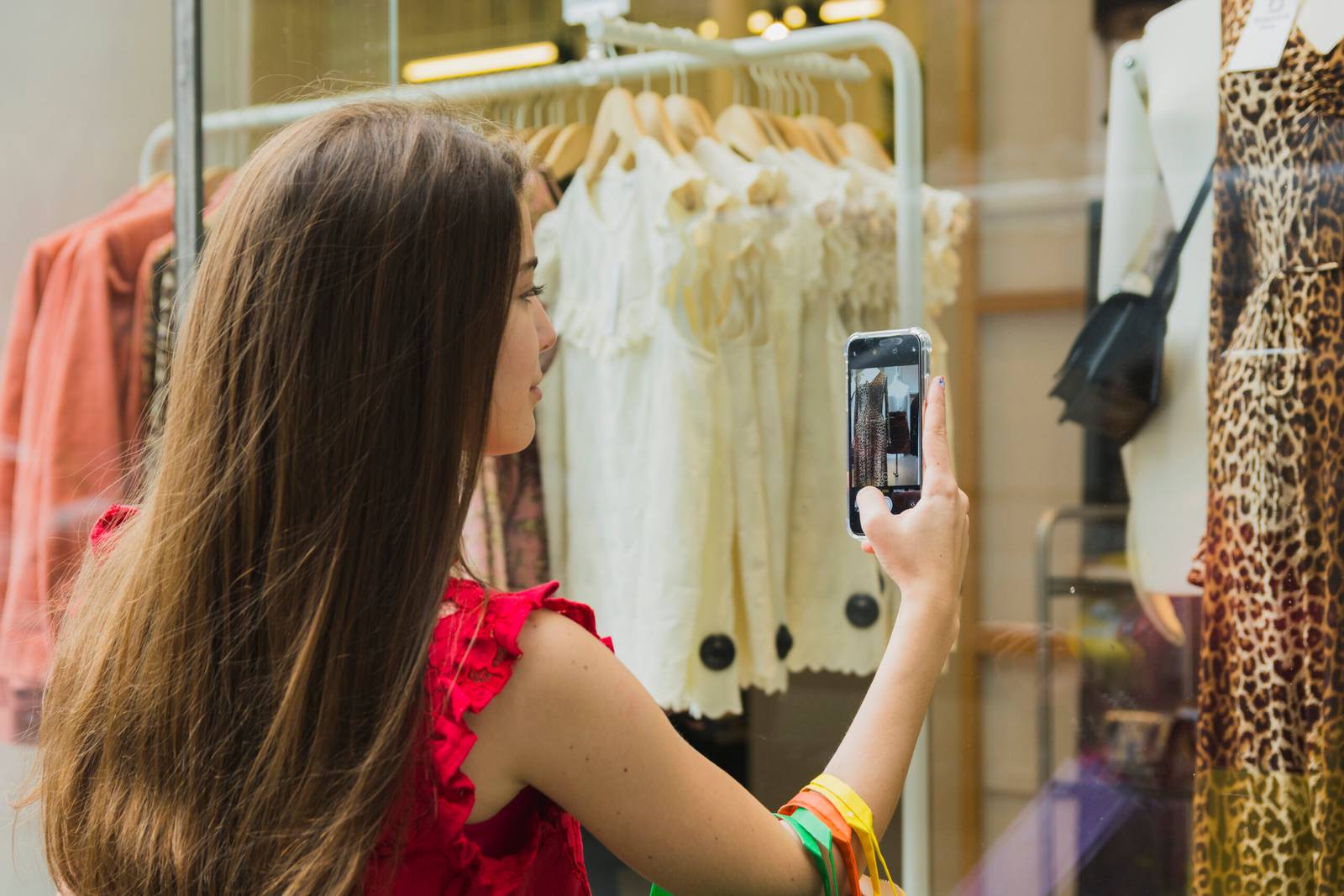Tech in Fashion Retail: Augmented Reality Fitting Rooms

by Web Digital
In the ever-evolving landscape of fashion retail, technology continues to play a pivotal role in reshaping the customer experience. One of the most intriguing innovations making waves in the industry is Augmented Reality (AR) fitting rooms. This cutting-edge technology seamlessly blends the physical and digital realms, offering consumers a unique and immersive way to try on clothes before making a purchase. In this article, we will explore the impact of AR fitting rooms on the fashion retail sector, examining the benefits, challenges, and future potential of this tech-driven approach.
The Rise of Augmented Reality in Fashion:
Augmented Reality has become increasingly prevalent in various industries, and fashion retail is no exception. Traditionally, consumers relied on physical fitting rooms to try on clothing before deciding to buy. However, the limitations of this approach, including long queues, unavailability of sizes, and time-consuming processes, led to the exploration of alternative solutions. Enter Augmented Reality fitting rooms, which leverage technology to enhance and streamline the shopping experience.
How AR Fitting Rooms Work:
AR fitting rooms utilize a combination of cameras, sensors, and advanced software to create a virtual try-on experience. When a customer steps into an AR fitting room, cameras capture their image and project it onto a screen. The customer can then select various clothing items, and the AR technology superimposes the chosen garments onto their virtual reflection in real time. This allows customers to see how different outfits look on them without actually having to put on the physical garments.
Benefits for Consumers:
Enhanced Convenience: AR fitting rooms eliminate the need to physically change in and out of clothes, saving time and effort for shoppers. This enhanced convenience is particularly appealing in busy retail environments.
Expanded Product Range: With AR, customers can virtually try on a vast range of clothing items that may not be physically available in the store. This opens up new possibilities for exploration and discovery, leading to increased customer satisfaction.
Personalization: AR fitting rooms can be customized to remember a customer’s preferences and style choices. This level of personalization creates a more tailored shopping experience, making customers feel understood and valued.
Benefits for Retailers:
Reduced Returns: By providing customers with a more accurate representation of how clothes fit, AR fitting rooms can help reduce the number of returns due to sizing issues. This not only saves costs for retailers but also improves overall customer satisfaction.
Data Insights: The technology behind AR fitting rooms collects valuable data on customer preferences, popular styles, and fitting trends. Retailers can leverage this data to optimize inventory, tailor marketing strategies, and stay ahead of fashion trends.
Innovative Brand Image: Adopting AR fitting rooms positions a retailer as tech-savvy and forward-thinking. This innovative brand image can attract tech-oriented consumers and set the retailer apart from competitors.
Challenges and Considerations:
Technical Glitches: Like any technology, AR fitting rooms are not immune to technical glitches. Connectivity issues, software bugs, or hardware malfunctions can disrupt the user experience, potentially leading to frustration among customers.
Privacy Concerns: As AR fitting rooms involve capturing and processing customer images, privacy concerns may arise. Retailers must implement robust security measures to protect customer data and address any privacy-related apprehensions.
Initial Implementation Costs: The upfront costs of implementing AR fitting rooms can be significant. Retailers need to carefully weigh the potential benefits against the initial investment and ongoing maintenance expenses.
The Future of AR Fitting Rooms:
As technology continues to advance, the future of AR fitting rooms looks promising. The integration of Artificial Intelligence (AI) and Machine Learning (ML) could further enhance the personalization aspect of the technology. Providing more accurate recommendations based on individual style preferences and body types. Additionally, the potential for AR fitting rooms to extend beyond traditional retail spaces and into the online shopping realm could revolutionize the way consumers interact with fashion brands.
Conclusion:
Tech in fashion retail, specifically in the form of Augmented Reality fitting rooms, is transforming the way customers shop for clothing. The seamless blend of the physical and digital worlds offers enhanced convenience, expanded product ranges, and personalized experiences for consumers. Retailers, in turn, stand to benefit from reduced returns, valuable data insights, and an innovative brand image. While challenges exist, the ongoing development of technology and a commitment to addressing concerns will likely pave the way for the widespread adoption of AR fitting rooms. As the fashion retail landscape continues to evolve, embracing such innovative technologies becomes not just a choice but a necessity for those looking to stay ahead in this dynamic industry.
Recommended Posts

The Evolution of AI in Education
December 4, 2023

Blockchain and the Future of Digital Voting
December 4, 2023

